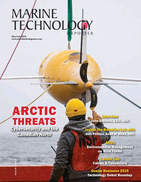
Norwegian Subsea Introduces Updated MRU Lineup at Ocean Business
Norwegian Subsea is bringing its Motion Reference Unit (MRU) technology to sonar-based applications with the introduction of an updated MRU lineup featuring full aiding capabilities at Ocean Business 2025 this week.Based on the same MRU platform already transforming applications such as wave radar and helideck monitoring, this newly packaged solution delivers precise roll, pitch, and heave data in addition to independent heading and velocity. It removes dependency on RTK or GNSS signals, eliminating common vulnerabilities that challenge efficiency and quality in bathymetric surveying. Built for
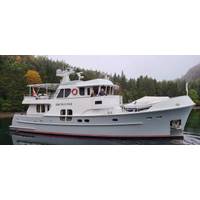
Canadian Shipwreck Hunters Unleash New Tech
Unlocking new levels of multibeam performance with Norwegian Subsea MRUMotion Reference Units (MRUs) are crucial in bathymetric survey technology, providing precise motion compensation data to ensure reliable and accurate seafloor mapping. For users like Captain Sid Hynes, a seasoned mariner exploring Newfoundland’s shipwreck-rich waters, the Norwegian Subsea MRU has redefined what is possible, delivering exceptional performance even in incredibly challenging conditions.The ChallengeAlong with his son, Matthew, Sid Hynes has dedicated countless hours to mapping shipwrecks using multibeam echosound

Kongsberg Discovery Launches Seapath 385 Navigation System
385 combines inertial technology and processing algorithms with multi-frequency GPS, GLONASS, Galileo, Beidou, QZSS and geostationary satellite signals. The system integrates raw inertial sensor data either from Kongsberg Discovery’s high performance MGC® (Motion Gyro Compass) or MRU (Motion Reference Unit), together with GNSS data, and RTK, PPP or DGNSS corrections.The result is an integrated, robust and highly accurate solution that, says Vidar Bjørkedal, VP Sales at Kongsberg Discovery, delivers unique performance, every time.“Since 1994, Seapath has set the benchmark for excellence
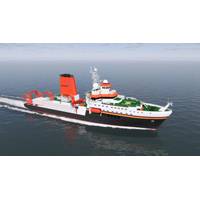
Kongsberg Sensors and Equipment for Germany's New Ocean Research Vessel
system, as well as cranes.The control system, fully developed and maintained in-house by Kongsberg Maritime, features the proprietary predictive active heave compensation (AHC) algorithm providing accurate winch system response matched to vessel motion, by aid of Kongsberg Discovery’s motion reference unit (MRU).Meteor IVis designed for worldwide multifunctional and interdisciplinary research, with a focus on the Atlantic Ocean. The new vessel will make important contributions to national and international marine science, particularly in the areas of climate and environmental research
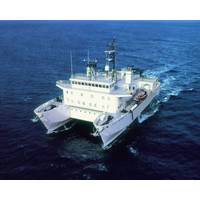
Tech File: Enhanced Active Heave Winch Control
collect water samples at various depths.In 2019, the University of Hawai‘i Marine Center decided to upgrade the Kilo Moana’s CTD Launch and Recovery System (LARS) to a new design with active heave compensation (AHC). This system takes information on wave action from the vessel’s motion reference unit (MRU) and adjusts the winch motors to compensate. The precise adjustments in winch tension—made hundreds of times per second—keep the package steady in relation to the seabed as the vessel pitches up and down.The enhanced winch control provides a safe, efficient and reliable way
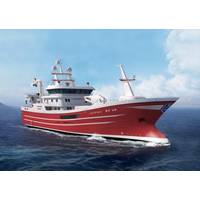
Kongsberg to Deliver Fish-Finding Sonars for Artemis Trawler
sonar products they have previously deployed.”Artemis will also be fitted with a SIMRAD ES80 split-beam echosounder and fishfinder, FS70 third-wire trawl sonar to monitor net opening and fishing conditions, and the PX Multicatch trawl monitoring system. A Kongsberg Maritime MRU-S Motion Reference Unit completes the order, providing an accurate picture of roll, pitch, yaw, and heave motion for enhanced sonar stabilization, enabling a steady image of the target fish shoals even in rough weather conditions
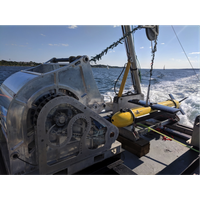
Kraken, ThayerMahan Demonstrate SeaScout for US Navy
for target detection and real-time full resolution SAS processing to enable in-stride automatic target detection and classification.TENTACLE, an intelligent all-electric winch that hosts sophisticated algorithms for dynamic manual, semi-autonomous or fully autonomous control. The integrated motion reference unit tracks the motion of the host vessel, and the onboard software models and predicts the sea state. The winch can be deployed stand-alone or integrated into a completely Autonomous Launch & Recovery System (ALARS) for both manned and unmanned surface vessels. The complete system fits inside
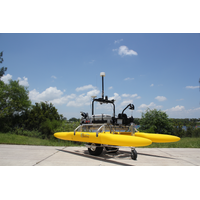
New ASV Delivered for Post-hurricane Surveying
and history delivering ASVs for high-precision bathymetric surveys, water quality analysis, hydrographic surveys, shallow water, force multiplier and many other applications. The ASV was delivered with a fully integrated Edgetech 6205 multi-beam echo sounder (MBES), R2Sonic 2022 with Type II I2NS motion reference unit and dual antenna GPS system, as well as a surface sound velocity probe and a cast winch deploying a CTD—all tightly integrated with HYPACK software
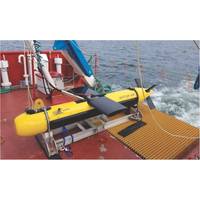
Meet Kraken’s Tentacle Autonomous LARS
namesake in nature, the Tentacle Intelligent Winch may look unassuming from the outside, but its true capabilities lie within. The fully integrated electronic control module hosts sophisticated algorithms for dynamic manual, semi-autonomous or fully autonomous control of the winch. The integrated motion reference unit tracks the motion of the host vessel, and the sophisticated onboard software models and predicts the sea state. This allows the winch to predict timing of wave peaks and troughs and optimize the variable torque on the motor to minimize input disturbances through the tow cable.The operator
 February 2025
February 2025


